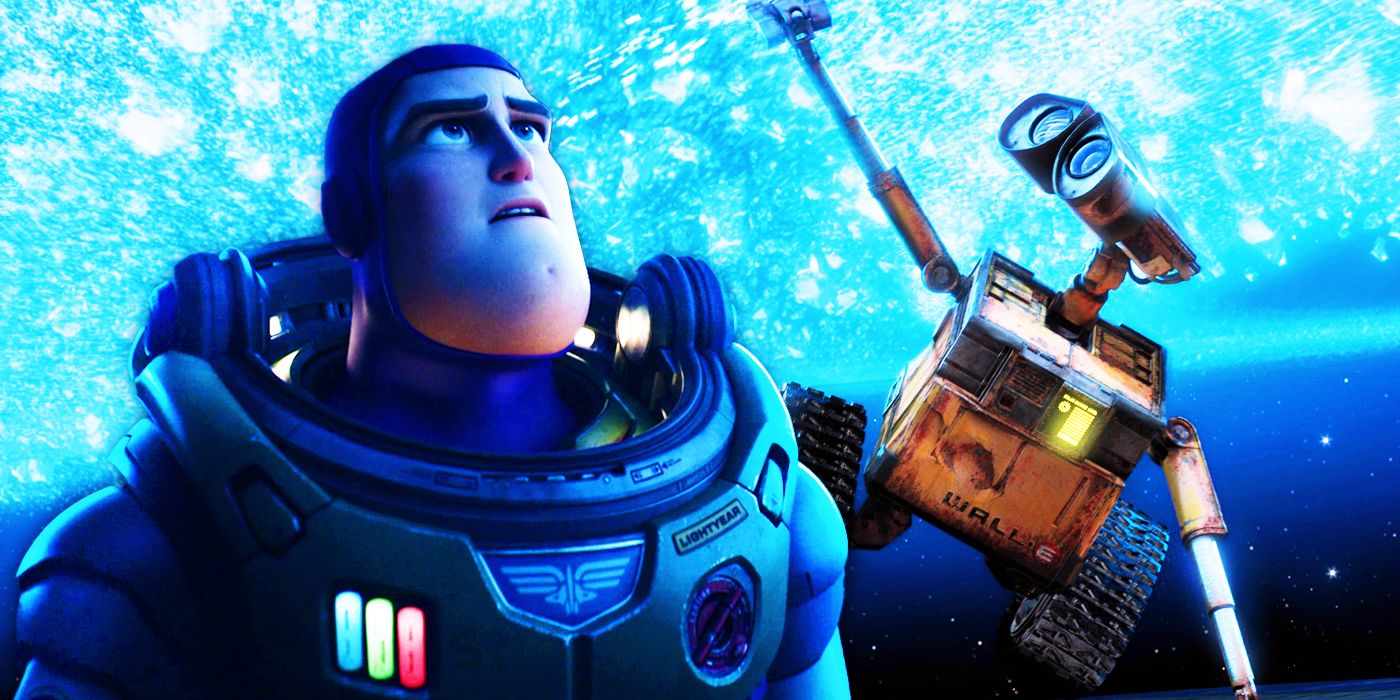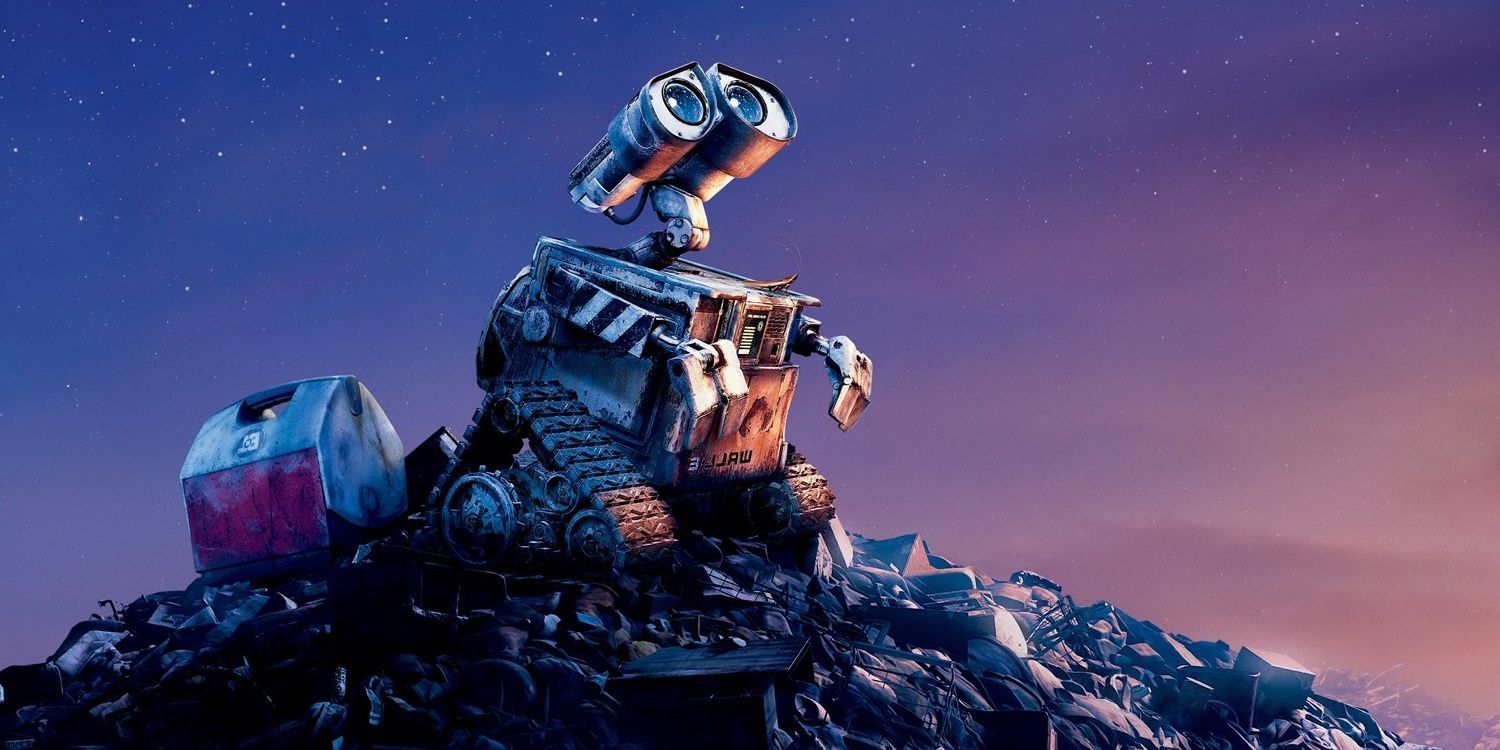Pixar has had success in multiple genres, including sci-fi, but Lightyear didn’t live up to the expectations set by the company’s previous sci-fi movie, WALL-E. Both WALL-E and Lightyear allowed Pixar to explore more existential themes in their work that are common in the sci-fi genre, such as future ideas of humanity. WALL-E followed the titular robot while Lightyear followed Buzz Lightyear from Toy Story. Given the thematic similarities, it might have been reasonable to expect that Lightyear would be met with similar acclaim to WALL-E. However, this has not been the case.
It might initially seem confusing why Lightyear failed for Pixar compared to WALL-E, but there were many reasons for the differing levels of success. Lightyear used an action-filled approach to explore its sci-fi themes while WALL-E was more meditative. Lightyear also served as both a Toy Story spin-off and an homage to sci-fi movies, which, while charming, meant that it was nothing new, whereas WALL-E was and continues to be a marvel. This is where Pixar went wrong with Lightyear, as it was unoriginal fare from a company known for pushing boundaries.
Lightyear & WALL-E Are Closer Than You Think
It might seem strange to consider the pair in the same sphere considering how differently they performed at the box office, but on paper, the Pixar movies Lightyear and WALL-E had a lot in common. The clearest similarities were seen in their shared sci-fi style and narratives. They also examined similar themes conventional to the sci-fi genre, such as the nature of humanity, what the future might look like, and space exploration. WALL-E and Lightyear even shared a similar premise of the protagonists trying to escape their living situation to return home again.
Lightyear and WALL-E also shared similarities with their heroes' attributes, as both main characters were hyper-focused on performing their duties at all costs, even to their detriment. While both complete their missions, they had to slow down and gain an appreciation for life beyond duty. WALL-E executed this through WALL-E's love story with Eve, while Lightyear had Buzz embracing working with the cadets. However, while Lightyear and WALL-E shared many similarities, they took wildly different approaches, which accounted for the difference in their successes.
Why WALL-E Worked For Pixar
When WALL-E was released in 2008, it was something completely new for Pixar. The movie was Pixar’s most ambitious effort to date and a departure from its previous entries, both visually and in its stripped-back story. Given its sci-fi setting and themes, WALL-E was an existential movie exploring the future of humanity, which lent itself a more adult appeal than some of Pixar's other movies. WALL-E was also incredibly unique for its lack of dialogue, which was a huge risk. However, while Wall-E's story and themes were one of Pixar’s biggest risks, they paid off, as WALL-E is still one of the company’s best and most unique movies.
Pixar tends to gain recognition for its movies’ visuals, but WALL-E was especially stunning. The depictions of the future, space, the desolate Earth, and the robots were all imaginative and yet surprisingly realistic. Most importantly, WALL-E's optimistic vision of the future was incredibly charming, proving what Pixar was capable of.
Why Lightyear Failed To Match WALL-E's Acclaim
It’s no secret that Lightyear’s performance at the box office failed to live up to expectations, especially those set by previous Pixar pictures like WALL-E. Several factors contributed to Lightyear’s middling performance, with many of them not being Lightyear’s fault (despite the movie’s reputation). One reason for Lightyear’s disappointing revenue at the 2022 box office was the competition from other movies during its opening weekend, with movies like Jurassic World: Dominion also vying for moviegoers’ attention. In contrast, WALL-E had less competition at the box office upon release, allowing it to stand out among its contemporaries.
However, Lightyear’s box office disappointments didn't completely account for why it didn't stand up to WALL-E’s acclaim. While WALL-E was a departure for Pixar in 2008, Lightyear was a conventional spin-off from an over-represented franchise, even if it was well-executed. For many, WALL-E represented the best of Pixar, a sense of inventiveness and newness, while Lightyear was almost the complete opposite. Standing up to WALL-E’s acclaim was a near-impossible task, and while Lightyear has its place in the Pixar canon, it’s no wonder it became the second-best Pixar sci-fi movie.




